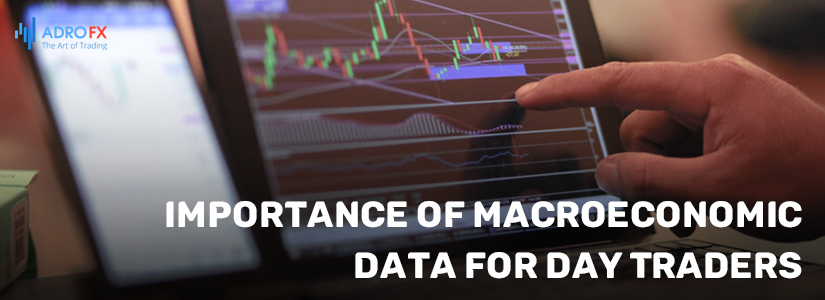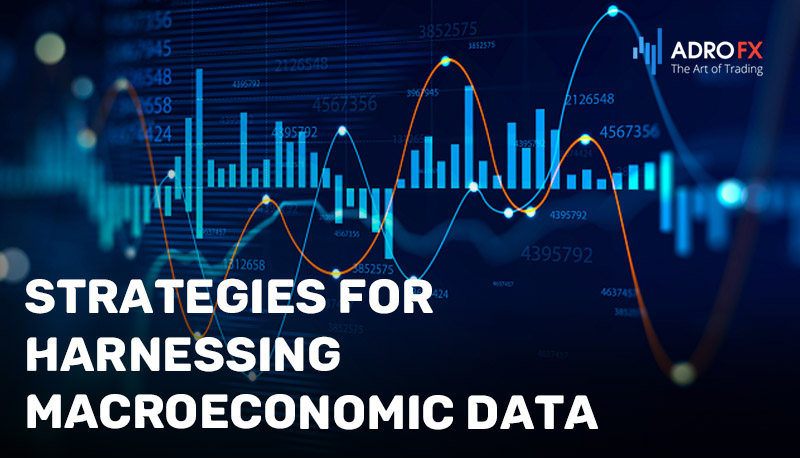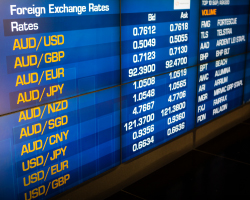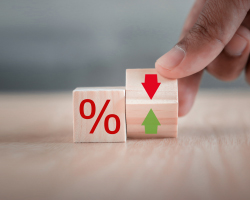Importance of Macroeconomic Data for Day Traders

In the fast-paced world of financial markets, where split-second decisions can make or break fortunes, day traders are akin to modern-day alchemists, tirelessly deciphering market trends and signals to extract profit from the chaos. Amidst this whirlwind of activity, one crucial tool has emerged as the North Star guiding their strategies – macroeconomic data. Far more than just dry statistics, these data points wield immense power, capable of influencing price movements, shaping market sentiment, and steering the course of entire economies. In this exploration, we delve into the profound importance of macroeconomic data for day traders, unraveling how these seemingly abstract indicators hold the key to informed decision-making, strategic positioning, and ultimately, triumph in the ever-shifting landscape of trading.
Why the Macro Matters
In the intricate tapestry of financial markets, where fortunes are won and lost in the blink of an eye, day traders assume the role of modern-day navigators, steering their ships through the turbulent waters of volatility. Yet, behind every successful trade lies a meticulous analysis of the macroeconomic landscape – a realm where a diverse array of data points converge to shape market dynamics in profound ways.
The Pillars of Macroeconomic Data
At its core, macroeconomic data encompasses a spectrum of indicators that provide insights into the health and direction of an entire economy. Ranging from unemployment rates and consumer spending to gross domestic product (GDP) growth and inflation figures, these data points serve as beacons that illuminate the underlying currents of economic activity. For day traders, the ability to interpret and anticipate shifts in these indicators can be the difference between substantial gains and heart-wrenching losses.
Market Impact and Reaction
The release of macroeconomic data is akin to a seismic event in the trading world. As these figures are unveiled, the markets undergo swift and often dramatic responses. For instance, a positive jobs report might trigger a surge in stock prices, reflecting optimism about increased consumer spending and corporate growth. Conversely, an unexpectedly high inflation rate could send shockwaves through the markets, leading traders to reassess their positions due to potential interest rate hikes.
The Art of Anticipation
Successful day traders possess a keen sense of anticipation – the ability to predict market movements before they occur. Herein lies the crux of macroeconomic data's significance. By studying past trends and understanding how certain indicators correlate with market reactions, traders can position themselves strategically ahead of major announcements. This proactive approach allows them to capitalize on potential price swings and maximize profitability.

How to Analyze the Macro Environment
Analyzing the macro environment involves assessing the broader external factors that can impact an organization or business. These factors are often categorized using frameworks like PESTEL (Political, Economic, Social, Technological, Environmental, and Legal) analysis. Here's a step-by-step guide on how to analyze the macro environment:
Identify the Factors: Start by identifying the key macro-environmental factors relevant to your industry or organization. These factors should have a significant impact on your business operations, strategy, and decision-making.
Collect Data: Gather relevant data and information for each factor. This could involve researching economic trends, political developments, social changes, technological advancements, environmental concerns, and legal regulations.
Categorize Factors using PESTEL Analysis:
- Political Factors: Consider the impact of government policies, regulations, stability, trade policies, taxation, and political stability.
- Economic Factors: Examine economic indicators such as GDP growth, inflation rates, exchange rates, interest rates, unemployment levels, and consumer confidence.
- Social Factors: Evaluate demographic trends, cultural shifts, lifestyle changes, consumer attitudes, and societal values.
- Technological Factors: Analyze technological innovations, research and development trends, automation, and how technology impacts your industry.
- Environmental Factors: Assess environmental concerns, sustainability efforts, climate change, and how your industry interacts with the environment.
- Legal Factors: Consider laws, regulations, and legal issues that affect your business, such as employment laws, industry-specific regulations, and intellectual property protection.
SWOT Analysis: After analyzing each PESTEL factor, consider how they collectively contribute to your organization's strengths, weaknesses, opportunities, and threats (SWOT analysis). This will help you understand how external factors align with your internal capabilities.
Impact Assessment: Determine the potential impact of each factor on your organization. Some factors may have a direct impact, while others might be more indirect. Assess the likelihood and magnitude of these impacts.
Scenario Planning: Develop various scenarios based on the different combinations of macro-environmental factors. This can help you prepare for potential future developments and their implications.
Prioritize Factors: Not all macro-environmental factors will have the same level of importance for your organization. Prioritize them based on their potential impact and relevance. 
Strategic Implications: Based on your analysis, identify strategic implications and potential strategies that can help your organization adapt to or take advantage of these external factors. This could involve adjusting your business model, product offerings, marketing strategies, or operational processes.
Monitor and Update: The macro environment is constantly evolving. Regularly monitor the factors you've analyzed and be prepared to update your analysis as new information becomes available.
Integration with Micro Environment Analysis: Remember that the macro environment interacts with the micro environment (internal factors such as customers, competitors, suppliers, and stakeholders). Consider both sets of factors when forming your overall business strategy.
By thoroughly analyzing the macro environment, you can gain valuable insights into the external forces shaping your industry and make informed decisions to navigate challenges and seize opportunities.
Strategies for Harnessing Macroeconomic Data
- The News Calendar Dance: One of the fundamental tools in a day trader's arsenal is the economic calendar. This meticulously curated schedule highlights when key economic data will be released. Savvy traders meticulously plan their trades around these dates, ensuring they're well-prepared for market volatility.
- Correlation Chronicles: Through diligent observation, traders can identify correlations between specific macroeconomic indicators and various asset classes. Armed with this knowledge, they can predict how an announcement in one sector might impact another, granting them a multi-dimensional view of potential market movements.
- The Risk-Return Equation: Macroeconomic data doesn't merely serve as an oracle for profit; it also aids in managing risk. By gauging the potential impact of a forthcoming announcement, traders can adjust their positions to align with their risk tolerance, safeguarding their capital in the face of uncertainty.
The Psychological Element
Beyond the numbers and charts, macroeconomic data carries a psychological weight that influences market sentiment. Positive data can fuel optimism, fostering bullish trends, while negative data can cast a shadow of doubt and prompt bearish sentiment. Thus, day traders must not only understand the data but also gauge how the broader market will react emotionally, using this insight to navigate the waves of investor sentiment.
Conclusion
In the ceaseless realm of day trading, where every decision carries weight, macroeconomic data emerges as a linchpin that binds strategy, knowledge, and opportunity. It's the compass guiding traders through the labyrinth of market intricacies, allowing them to decode signals, anticipate reactions, and ultimately, secure a competitive edge. With every economic release, the market reveals a piece of its puzzle – and day traders adeptly fit these pieces together, transforming data into profit and volatility into victory.

About AdroFx
Established in 2018, AdroFx is known for its high technology and its ability to deliver high-quality brokerage services in more than 200 countries around the world. AdroFx makes every effort to keep its customers satisfied and to meet all the trading needs of any trader. With the five types of trading accounts, we have all it takes to fit any traders` needs and styles. The company provides access to 115+ trading instruments, including currencies, metals, stocks, and cryptocurrencies, which make it possible to make the most out of trading on the financial markets. Considering all the above, AdroFx is the perfect variant for anyone who doesn't settle for less than the best.









